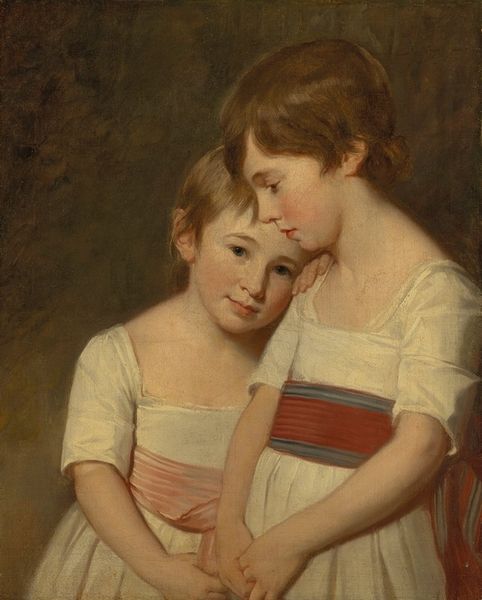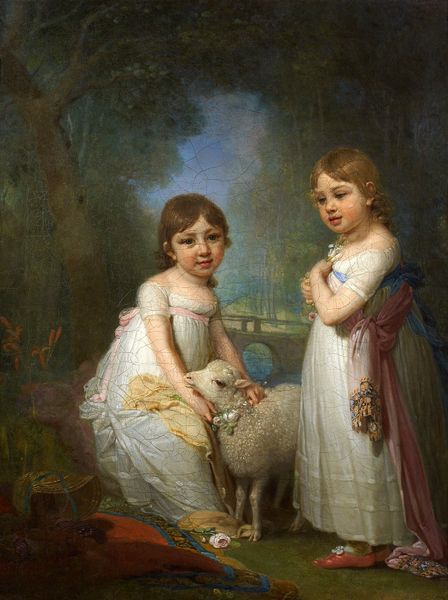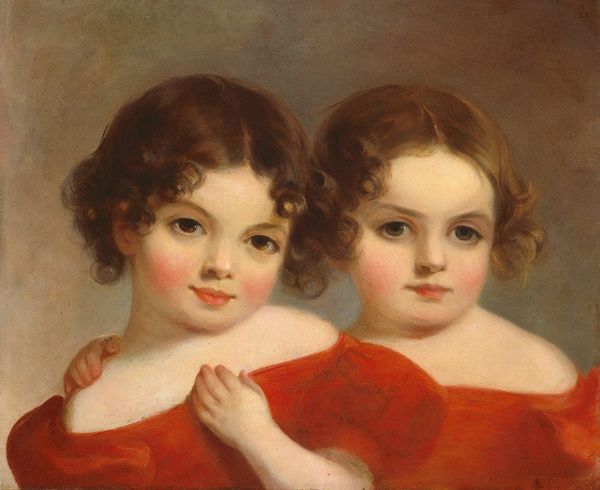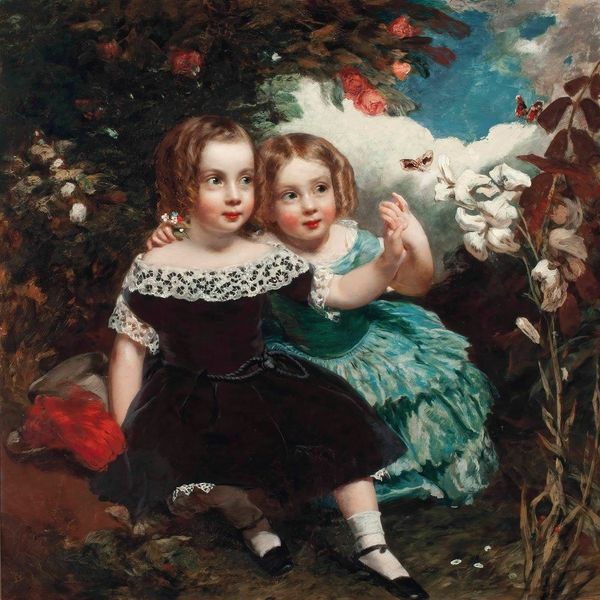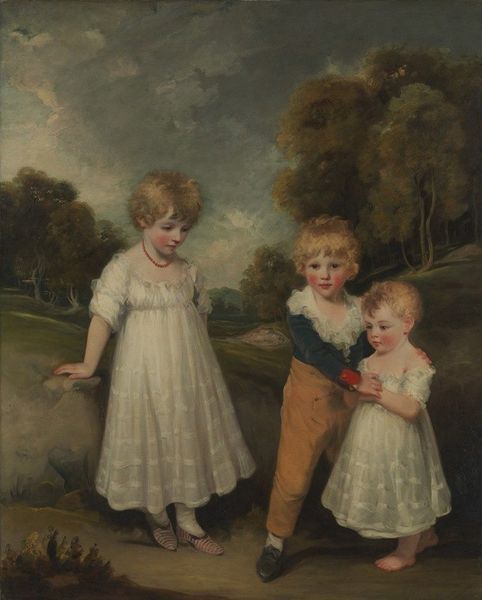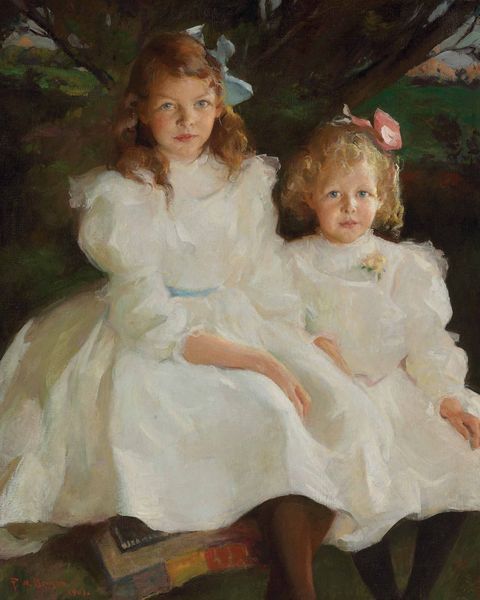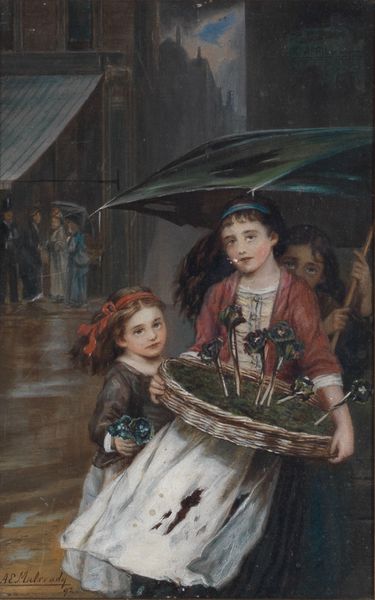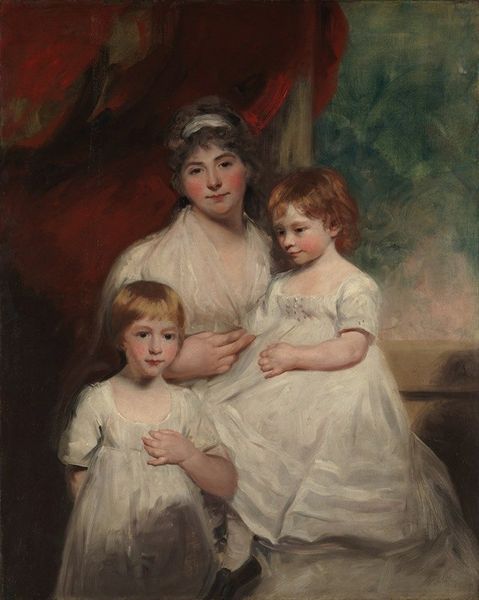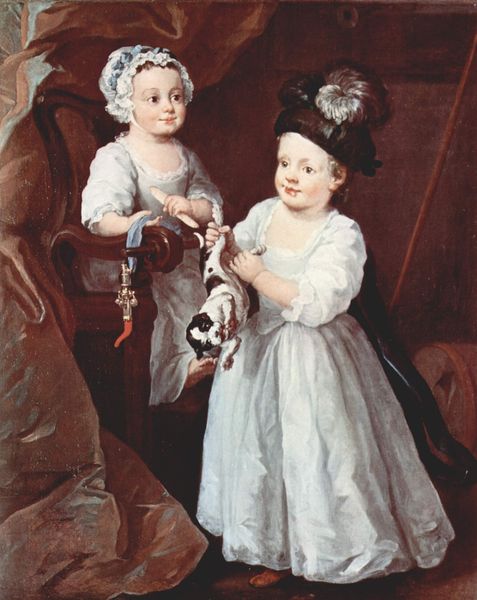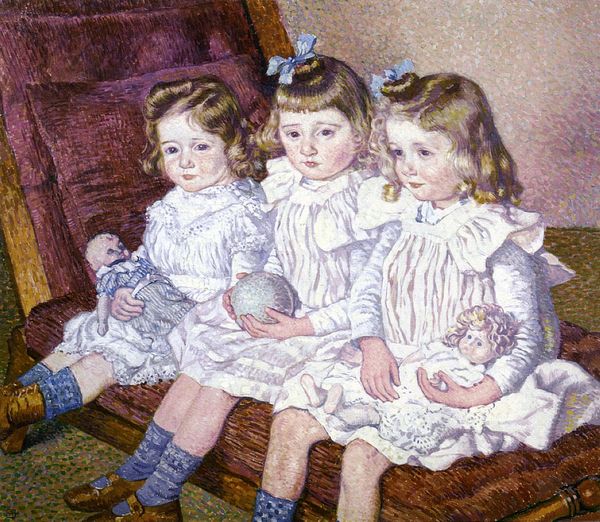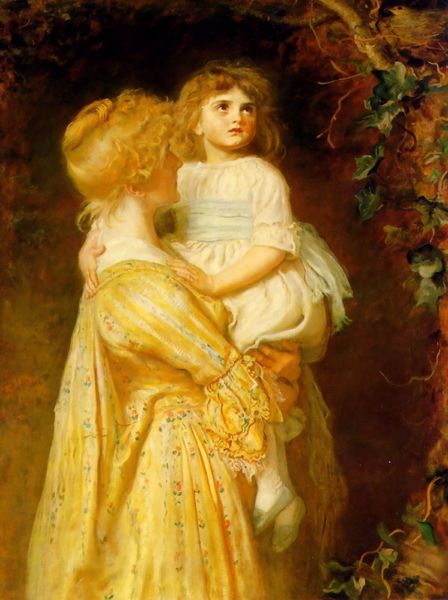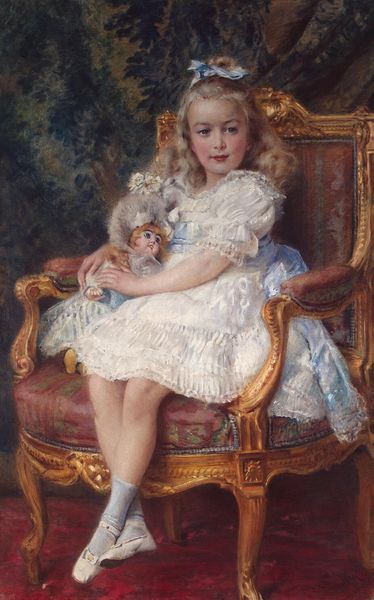
painting, watercolor
#
portrait
#
painting
#
figuration
#
watercolor
#
romanticism
#
genre-painting
#
academic-art
#
miniature
Copyright: Public domain
Curator: Here we see "Princesses Elise and Fanny From and To Liechtenstein," a watercolor crafted in 1835 by Josef Kriehuber. My initial impression is one of incredible fragility and controlled grace. What strikes you first? Editor: The composition leans heavily into sentimentality, a romantic idealization of childhood innocence, carefully posed within their aristocratic context. The cascading drapery, the landscape beyond—it's a constructed image, projecting power. Curator: Yes, the visual language is overt. Notice the careful rendering of the fabrics; the subtle watercolor washes constructing volume and texture. It's almost hyperreal in its detail, a deliberate strategy. Look how their pale dresses reflect the soft, diffused light from the unseen window. The artist orchestrates everything for aesthetic harmony. Editor: And that orchestrated harmony is precisely the point, isn’t it? These are not just children, they are emblems of their lineage. The meticulous depiction of their toys, the delicately patterned cushions—it all underscores a lifestyle of privilege and carefully cultivated identity. Think about the act of commissioning such a work: it solidifies their position and broadcasts their status within society. Curator: A reading reinforced by their shared gaze. There’s a knowingness, wouldn’t you say? Editor: Absolutely. It transcends mere portraiture; it's a statement of belonging, of inherent worth, framed by the values of the time. Even the diminutive size, classifying it as a miniature, adds to this sense of preciousness. Curator: Perhaps, but don't overlook Kriehuber's mastery of light. Observe the contrast between the soft, yielding forms of the children and the more rigidly defined architectural elements in the background. It creates depth and draws the eye towards the central figures, regardless of their symbolic weight. Editor: Of course, the aesthetic choices are skillfully deployed, but inseparable from the context. We cannot divorce form from the historical function of such a work, meant for specific viewers in a specific moment. Curator: A potent reminder to not just look, but to also understand. Editor: Precisely. This painting allows us a glimpse into both artistic ingenuity and the power dynamics of its time. Curator: A perspective shift that reveals the intertwined nature of art and its social environment. Thank you.
Comments
No comments
Be the first to comment and join the conversation on the ultimate creative platform.
